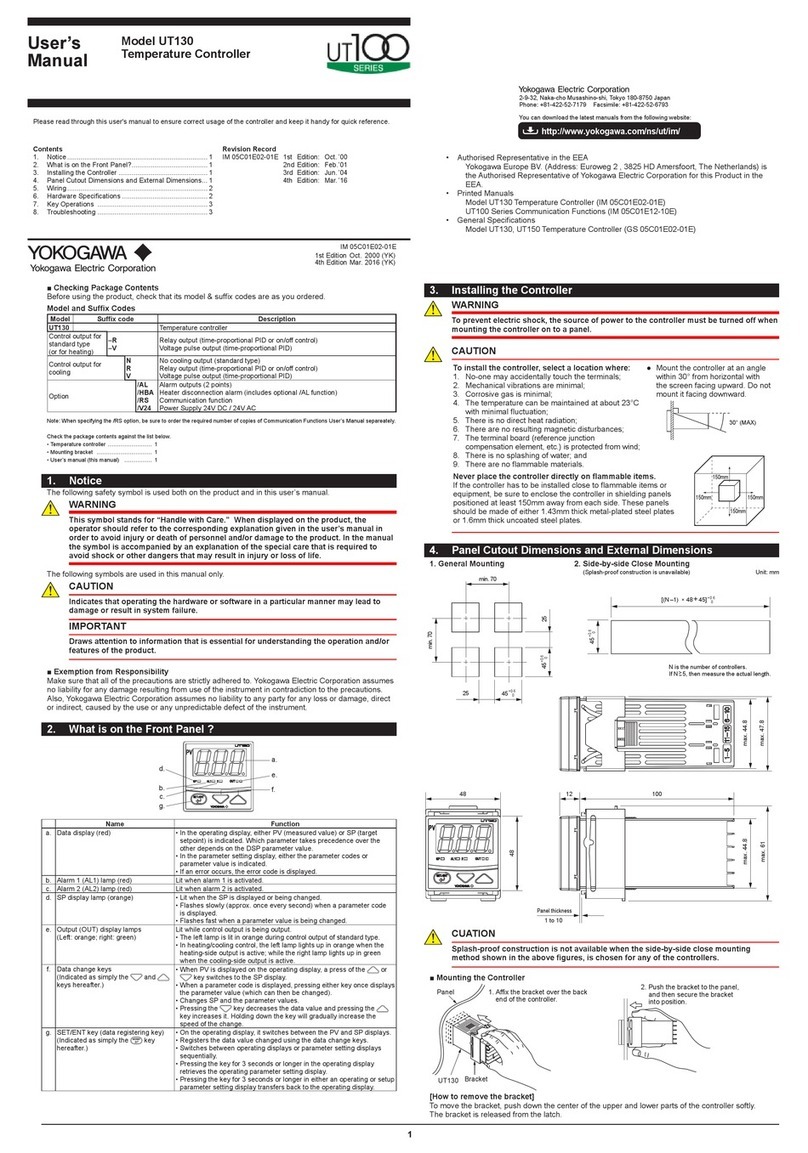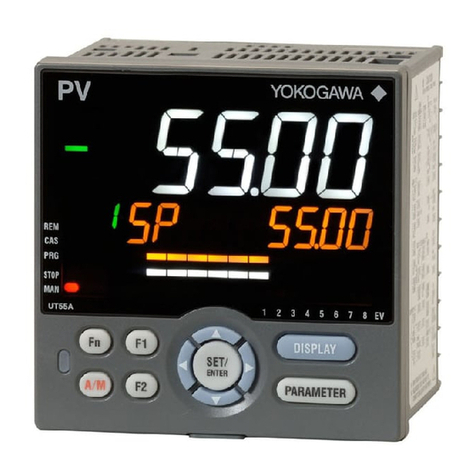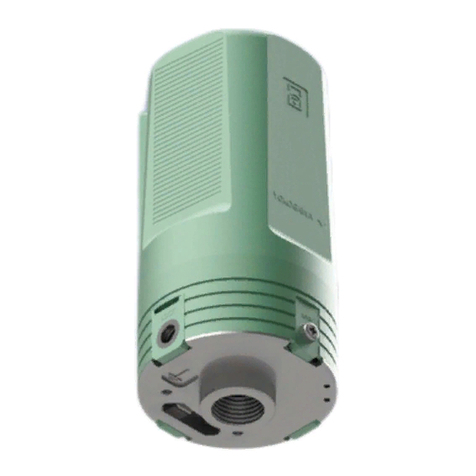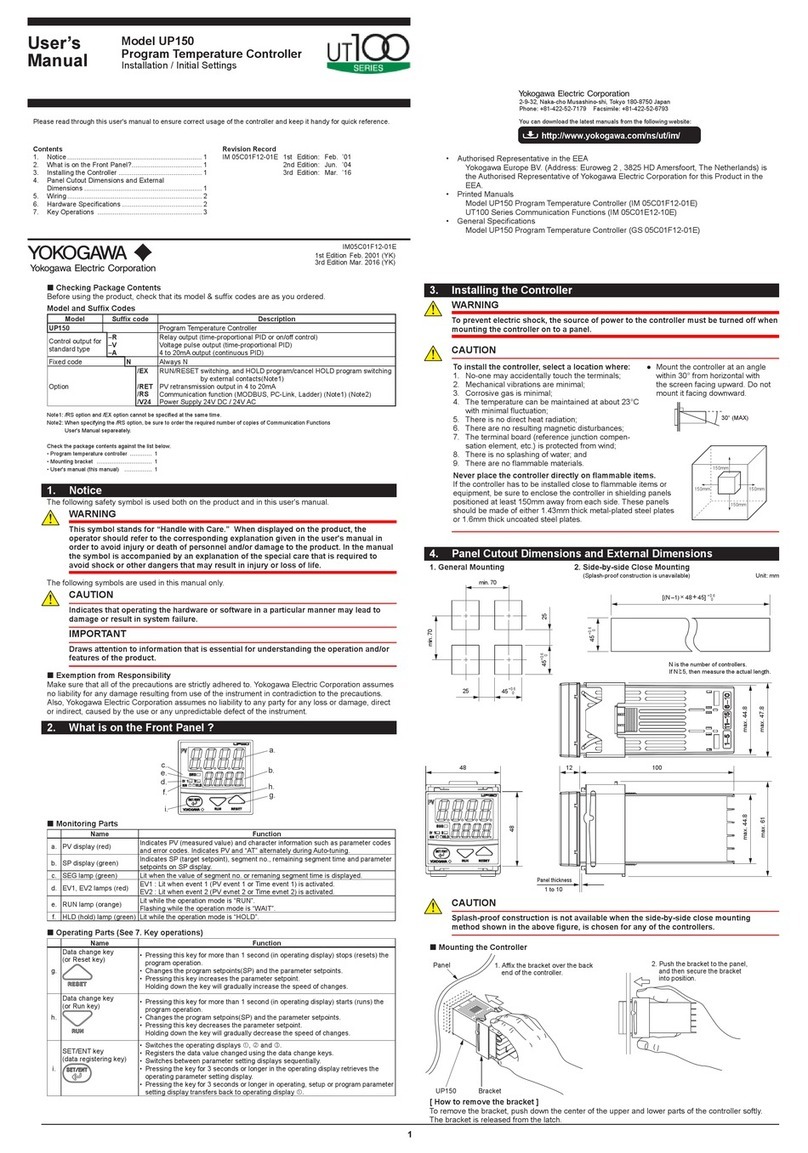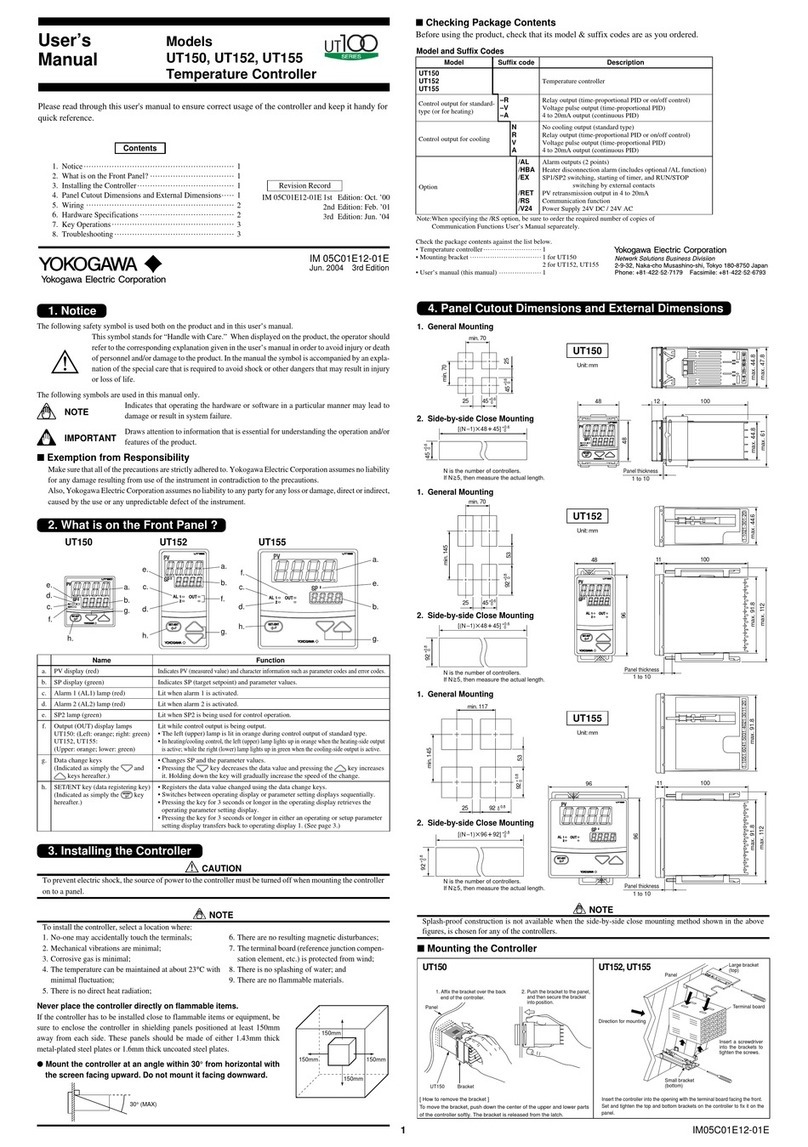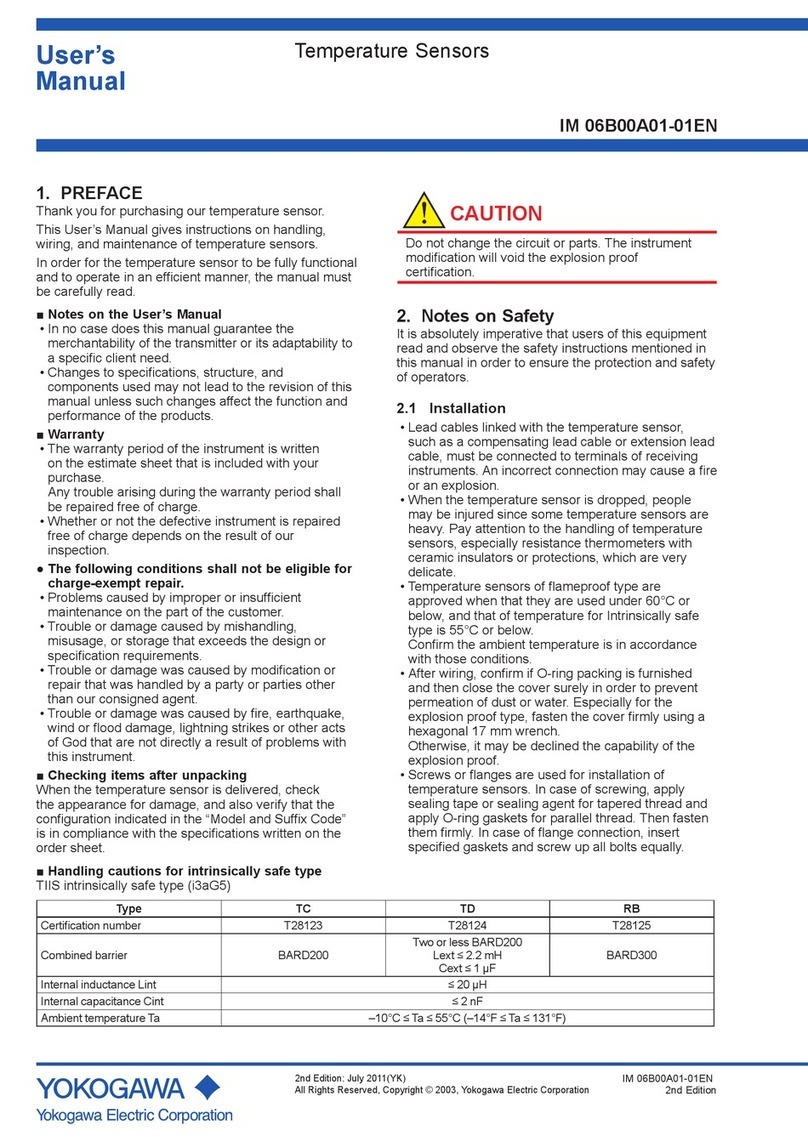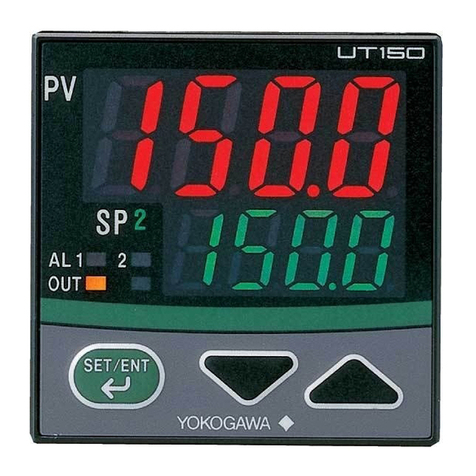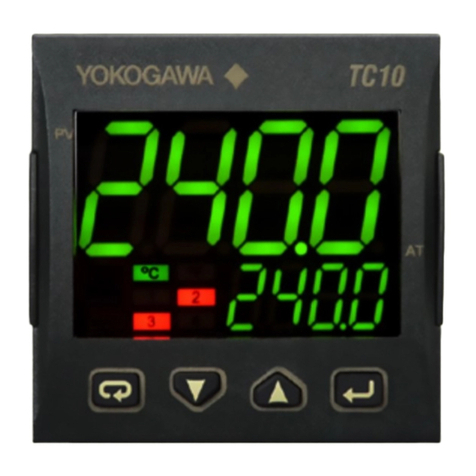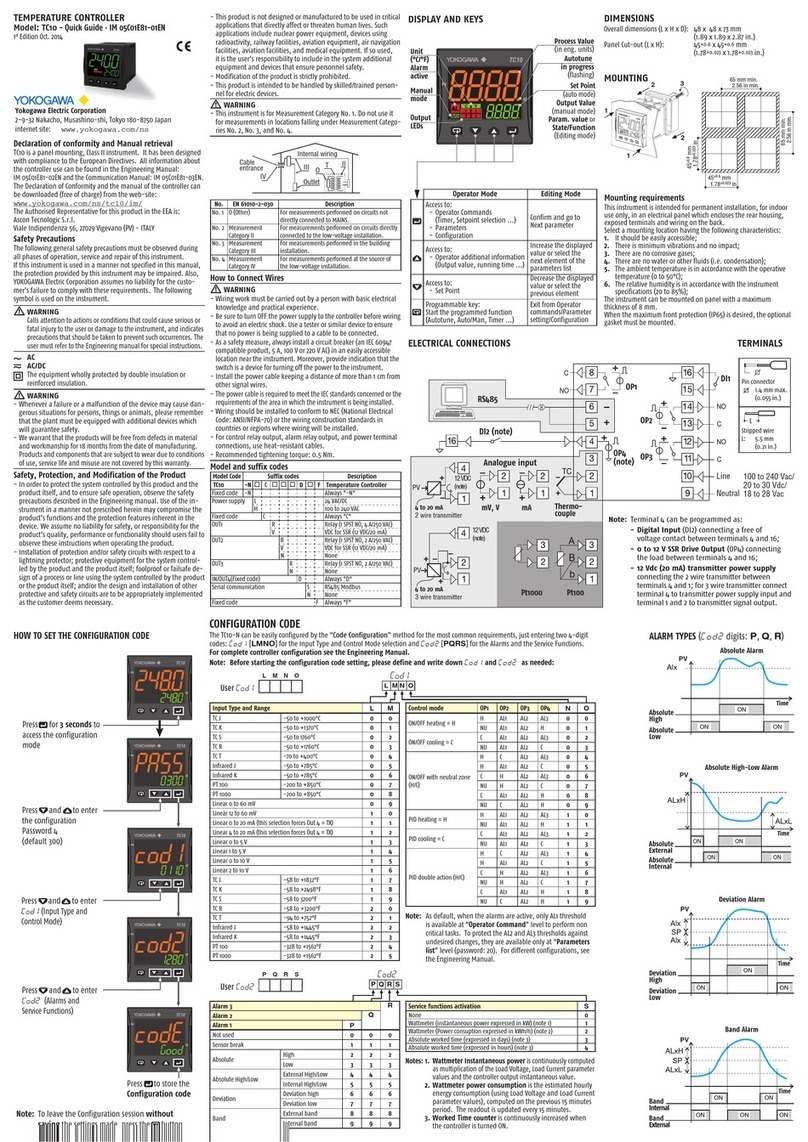
Yokogawa Electric Corporation - TC10 - ENGINEERING MANUAL - PAG. 8
5.3.2 Complete configuration procedure
The configuration parameters are collected in various
groups. Every group defines all parameters related with a
specific function (e.g.: control, alarms, output functions).
1. Push the button for more than 3 seconds. The upper
display will show PASS while the lower display will show 0.
2. Using and buttons set the programmed password.
Notes: 1. The factory default password for configuration
parameters is equal to 30.
2. During parameter modification the instrument
continue to perform the control.
In certain conditions, when a configuration chan-
ge can produce a heavy bump to the process, it is
advisable to temporarily stop the controller from
controlling during the programming procedure
(control output will be OFF).
Apasswordequalto2000+theprogrammed
value(e.g.2000+30=2030).
The control will restart automatically when the
configuration procedure will be manually closed.
Push the button
If the password is correct the display will show the acronym
of the first parameter group preceded by the symbol: ]
.
In other words the upper display will show: ]inp
(group of the Input parameters).
The instrument is in configuration mode.
5.4 HOW TO EXIT THE “CONFIGURATION
MODE”
Push button for more than 3 seconds, the instrument will
come back to the “standard display”.
5.5 KEYBOARD FUNCTIONS DURING
PARAMETER CHANGING
A short press allows to exit from the current parameter
group and select a new parameter group.
A long press allows you to close the configuration
parameter procedure (the instrument will come back
to the “standard display”).
When the upper display is showing a group and the
lower display is blank, this key allows to enter in the
selected group.
When the upper display is showing a parameter and
the lower display is showing its value, this key allows
to store the selected value for the current parameter
and access the next parameter within the same group.
Allows to increase the value of the selected parameter.
Allows to decrease the value of the selected parameter.
+ These two keys allow to return to the previous
group. Proceed as follows:
Push the button and maintaining the pressure,
then push the button; release both the buttons.
Note: The group selection is cyclic as well as the selection
of the parameters in a group.
5.6 FACTORY RESET - DEFAULT
PARAMETERS LOADING PROCEDURE
Sometime, e.g. when you re-configure an instrument
previously used for other works or from other people or when
you have made too many errors during configuration and
you decided to re-configure the instrument, it is possible to
restore the factory configuration.
This action allows to put the instrument in a defined
condition (the same it was at the first power ON).
The default data are those typical values loaded in the
instrument prior to ship it from factory.
To load the factory default parameter set, proceed as follows:
1. Press the button for more than 5 seconds. The upper
display will show PASS while the lower display shows 0;
2. Using and buttons set the value -481;
3. Push button;
4. The instrument will turn OFF all LEDs for a few seconds,
then the upper display will show dFLt (default) and then
all LEDs are turned ON for 2 seconds. At this point the
instrument restarts as for a new power ON.
The procedure is complete.
Note: The complete list of the default parameters is available
in Appendix A.
5.7 CONFIGURING ALL THE PARAMETERS
In the following pages we will describe all the parameters of
the instrument. However, the instrument will only show the
parameters applicable to its hardware options in accordance
with the specific instrument configuration (i.e. setting AL1t
[Alarm1type]tononE[notused],allparametersrelatedto
alarm 1 will be skipped).
]inP Group - Main and auxiliary input configuration
[1] SEnS - Input type
Available: Always
Range: J = TC J
crAL = TC K
S = TC S
r = TC R
t = TC T
Pt1 = RTD Pt 100
Pt10 = RTD Pt 1000
0.60 = 0 to 60 mV linear
12.60 = 12 to 60 mV linear
0.20 = 0 to 20 mA linear
4.20 = 4 to 20 mA linear
0.5 = 0 to 5 V linear
1.5 = 1 to 5 V linear
0.10 = 0 to 10 V linear
2.10 = 2 to 10 V linear
Notes: 1. When a TC input is selected and a decimal figure
is programmed (see the next parameter) the max.
displayed value becomes 999.9°C or 999.9°F.
2. Every change of the SEnS parameter setting
willforcethe[2]dP=0anditwillchangeall
parameters related with dP (e.g. set points,
proportional band, etc.).
